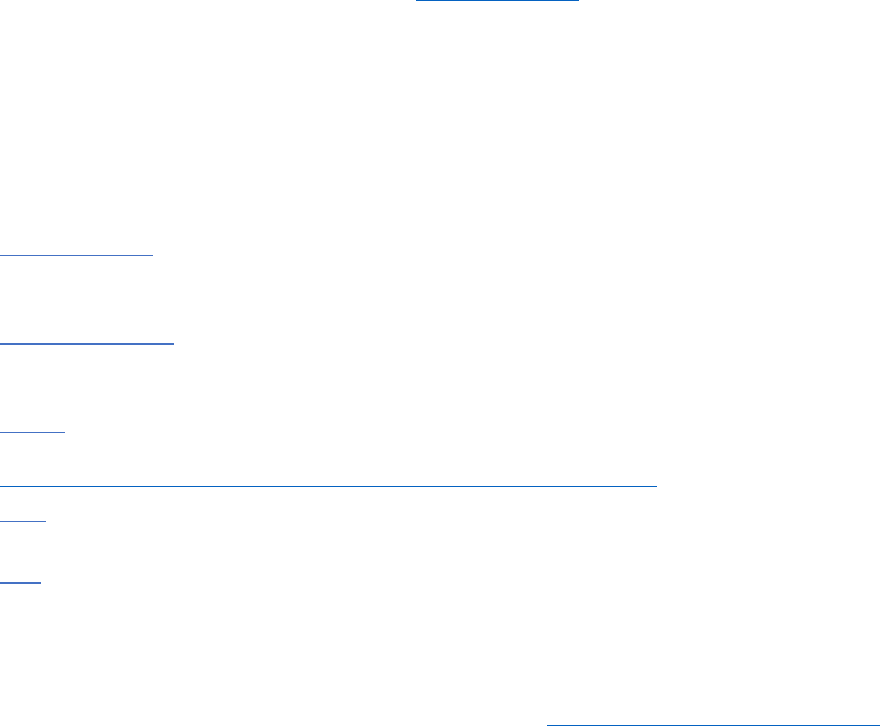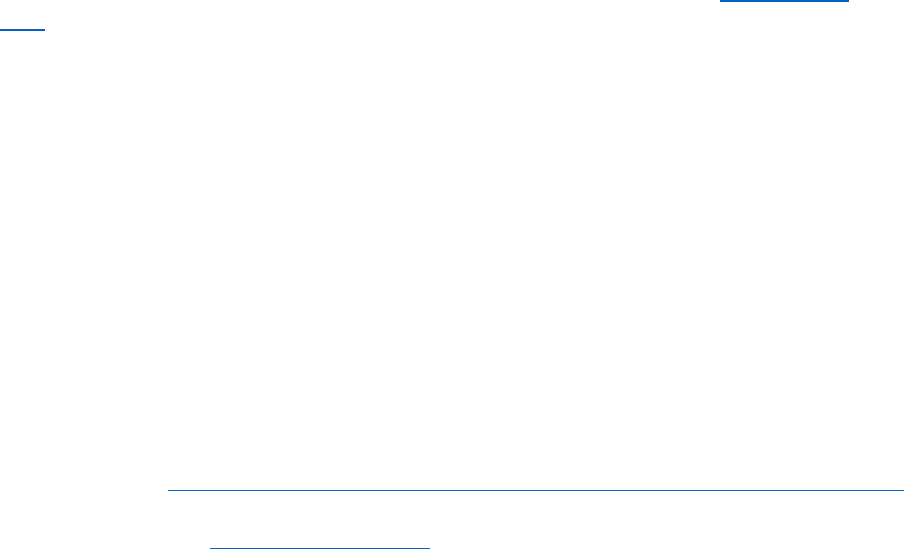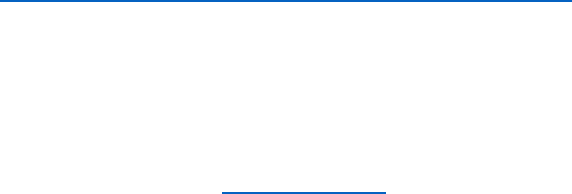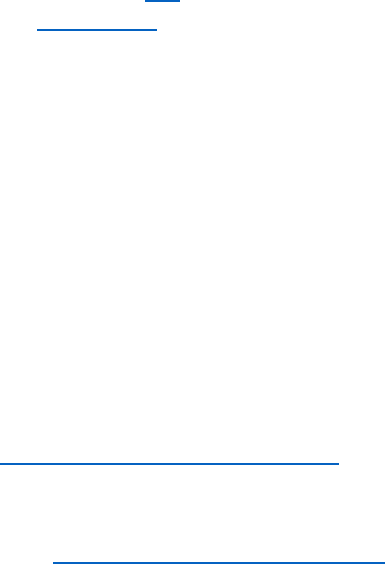Page 1 of 9
Note: The BTFP ceased extending new loans on March 11, 2024.
Bank Term Funding Program
Frequently Asked Questions
The following is intended to address questions about the Bank Term Funding Program (“Program”). The
Federal Reserve expects to periodically update these FAQs; please check this website for new FAQs or
revisions to previously issued FAQs.
Updated January 24, 2024
A. Purpose and design ....................................................................................................................... 3
A.1. Why did the Federal Reserve establish the Program? ................................................................... 3
A.2. How will the Program work? ......................................................................................................... 3
A.3. How is the Program different from primary credit, the main discount window lending program
for depository institutions? (Updated 1/24/2024) ......................................................................... 3
A.4. When will the Program be operational? ........................................................................................ 4
A.5. How long will the Program be in effect? (Updated 1/24/2024) ..................................................... 4
B. Borrower eligibility and requirements ........................................................................................... 4
B.1. Who is eligible to participate in the Program? .............................................................................. 4
B.2. How do Reserve Banks determine if a borrower is eligible for primary credit for purposes of
the Program? (Added 4/3/2023) ................................................................................................... 4
B.3. Are depository institutions that are eligible for secondary credit eligible to participate in the
Program? ....................................................................................................................................... 4
B.4. Will non-depository institutions be eligible to participate in the Program? .................................. 4
B.5. How can an eligible borrower enroll in the program? (Updated 4/3/2023)
.................................. 4
C. Collateral ...................................................................................................................................... 5
C.1. What is eligible collateral? ............................................................................................................. 5
C.2. How does the requirement for a borrower to have owned a security “as of March 12, 2023”
apply to banks that merge after that date? How does it apply to acquisitions of securities
portfolios? (Added 3/16/2023) ...................................................................................................... 5
C.3. What are some examples of types of eligible collateral? (Updated 3/16/2023) ........................... 5
C.4. How is collateral valued? ............................................................................................................... 6
C.5. How will payments of principal on pledged collateral be treated under the Program? Should
the pledged collateral always at least equal the amount of the institution’s outstanding
Program advances? (Added 3/15/2023) ........................................................................................ 6
C.6. If your institution already has eligible collateral pledged to the discount window, can this
collateral be used for the Program? .............................................................................................. 6
Page 2 of 9
C.7. Are advances extended under the Program made with recourse? ............................................... 6
C.8. Can a borrower pledge eligible collateral for the purpose of requesting an extension of credit
under the Program at a later date? ............................................................................................... 7
D. Basic mechanics ............................................................................................................................ 7
D.1. How do depository institutions initiate an advance under the Program? (Updated 8/18/2023) 7
D.2. At what rate will advances under the Program be extended? (Updated 1/24/2024) ................... 7
D.3. Where is the Program rate available to the public? ...................................................................... 7
D.4. Is the rate fixed for the life of a Program advance? ...................................................................... 7
D.5. Are there any fees to participate in the Program? ........................................................................ 7
D.6. What will be the maturity of Program extensions of credit? ........................................................ 7
D.7. Is there a limit on the total amount of Program extensions of credit that an individual eligible
depository institution may obtain? ............................................................................................... 7
D.8. Are there any penalties associated with prepayment of a Program advance? ............................. 8
D.9. How is accrued interest on loans under the Program calculated? (Added 4/3/2023) ...................
8
D.10. When does the borrower have to pay interest on loans made under the Program? (Added
4/3/2023) ....................................................................................................................................... 8
E. Regulatory treatment ................................................................................................................... 8
E.1. Does a financial institution’s use of the Program raise bank supervisory concerns? (Added
3/16/2023) ..................................................................................................................................... 8
E.2. How will borrowings from the Program be reflected on an eligible borrower’s call reports?
(Added 4/3/2023) .......................................................................................................................... 8
F. Other ............................................................................................................................................ 9
F.1. Does a depository institution have to have a master account at a Federal Reserve Bank in order
to borrow under the Program? ..................................................................................................... 9
F.2. Can a bank that receives advances under the Program also receive primary credit advances? ... 9
F.3. Where should questions regarding the Program be directed?...................................................... 9
F.4. What information does the Federal Reserve publicly disclose about the Program? (Updated
1/24/2024) ..................................................................................................................................... 9

Page 3 of 9
A.
Purpose and design
A.1.
Why did the Federal Reserve establish the Program?
To support American businesses and households, the Federal Reserve Board, pursuant to section 13(3)
of the Federal Reserve Act, authorized all twelve Reserve Banks to establish the Program to make
available additional funding to eligible depository institutions in order to help assure banks have the
ability to meet the needs of all their depositors. The Program will be an additional source of liquidity
against high-quality securities, eliminating an institution’s need to quickly sell those securities in times of
stress.
A.2.
How will the Program work?
The Program offers advances of up to one year in length to banks, savings associations, credit unions,
and other eligible depository institutions pledging any collateral eligible for purchase by the Federal
Reserve Banks in open market operations (see 12 CFR 201.108(b)), s
uch as U.S. Treasuries, U.S. agency
securities, and U.S. agency mortgage-backed securities. These assets will be valued at par. Eligible
borrowers that have discount window borrowing documentation in place and are eligible for primary
credit will be able to borrow from the Program immediately.
A.3.
How is the Program different from primary credit, the main discount window
lending program for depository institutions?
(Updated 1/24/2024)
The Program differs from primary credit lending in several ways.
Eligible collateral: The
eligible collateral under the Program is limited to collateral eligible for purchase
by the Federal Reserve in open market operations (see 12 CFR 201.108(b)). Primary credit accepts this
collateral, as well as a wider range of securities and loans.
Collateral valuation: U
nder the Program, collateral will be valued at its par value. In contrast, collateral
is valued at its fair market value for primary credit. Par value is equivalent to the outstanding face
amount of the collateral.
Margin: Under the Program, there will be no haircuts applied to eligible collateral.
For information on
margins for primary credit, visit:
https://www.frbdiscountwindow.org/Pages/Collateral/collateral valuation.
Term: Advances made under the Program may have a term of up to one year. Advances under primary
credit may be made for a term of up to 90 days.
Rate: The rate for term advances under the Program w
ill be the one-year overnight index swap rate
plus 10 basis points, provided that the rate may not be lower than the IORB rate in effect on the day
the advance is made. The rate will be fixed for the term of the advance on the day the advance is made.
With primary credit advances, if the primary credit rate is changed while a term primary credit loan is
still outstanding, the new rate applies on and after the effective date of the change.
For a
dditional information on the primary credit facility, visit: https://www.frbdiscountwindow.org/.

Page 4 of 9
A.4.
When will the Program be operational?
Federal Reserve Banks will begin making advances under the Program to eligible borrowers effective
March 12, 2023.
A.5.
How long will the Program be in effect? (Updated 1/24/2024)
Advances can be requested under the Program until March 11, 2024.
B.
Borrower eligibility and requirements
B.1.
Who is eligible to participate in the Program?
Any U.S. federally insured depository institution (including a bank, savings association, or credit union)
or U.S. branch or agency of a foreign bank that is eligible for primary credit under the Federal Reserve
discount window is eligible to borrow under the Program.
B.2.
How do Reserve Banks determine if a borrower is eligible for primary credit for
purposes of the Program? (Added 4/3/2023)
A federally insured depository institution or a U.S. branch or agency of a foreign bank is only eligible to
borrow from the Program if it is eligible for primary credit at the discount window. Generally, such
institutions are eligible for primary credit if they are in sound financial condition as determined by their
respective Reserve Bank. To make such a determination, Reserve Banks look to supervisory ratings and
capitalization data, as well as supplementary information. For more information on primary credit
eligibility with respect to the discount window, please visit the discount window eligibility page
a
nd
FAQs.
For purposes of the Program, the Reserve Banks assess borrower eligibility with respect to the primary
credit criterion at the time credit is extended. The Reserve Banks will not seek immediate repayment
solely because a borrower becomes ineligible for primary credit during the term of a Program loan.
B.3.
Are depository institutions that are eligible for secondary credit eligible to
participate in the Program?
No.
B.4.
Will non-depository institutions be eligible to participate in the Program?
No.
B.5.
How can an eligible borrower enroll in the program? (Updated 4/3/2023)
In order to enroll in the Program, eligible borrowers must submit a request using a standard template
email (available at https://www.frbdiscountwindow.org/GeneralPages/bank term funding program)
to its lending Reserve Bank. If the depository institution has not previously agreed to the terms of the
Federal Reserve Bank’s Operating Ci
rcular No 10 (Lending), the depository institution must provide any
Operating Circular No 10 documentation that a Federal Reserve Bank requires immediately upon the

Page 5 of 9
Federal Reserve Bank’s request. Depository institutions should contact the Federal Reserve Bank in
whose District they are located to determine whether additional documentation is necessary and for
detailed information on the documentation requirements. For contact information for each District,
visit https://www.frbdiscountwindow.org/Pages/Select-Your-District
.
C.
Collateral
C.1.
What is eligible collateral?
Eligible collateral includes any collateral that (i) is eligible for purchase by the Federal Reserve Banks in
open market operations (see 12 CFR 201.108(b)), and (ii) was owned by the borrower as of March 12,
2023.
C.2.
How does the requirement for a borrower to have owned a security “as of March
12, 2023” apply to banks that merge after that date? How does it apply to
acquisitions of securities portfolios?
(Added 3/16/2023)
In the context of depository institution mergers, the institution that results from the merger (the
“resulting institution”) is typically considered to be a continuation of both the merger parties. In the
case of the Program, if two federally insured depository institutions merge and the resulting institution
is an eligible borrower, the assets of the resulting institution would be eligible collateral if the assets
(i) are eligible for purchase by the Federal Reserve Banks in open market operations and (ii) were owned
by either merger party as of March 12, 2023. The same is true with respect to mergers involving U.S.
branches and agencies of foreign banks and another eligible borrower.
Similarly, if a federally insured depository institution or U.S. branch or agency that is an eligible
borrower (“purchaser”) acquires all or substantially all the assets of an “assumed institution,” the assets
of the purchaser would be eligible collateral if they (i) are eligible for purchase by the Federal Reserve
Banks in open market operations and (ii) were owned by either the purchaser or an assumed institution
as of March 12, 2023. For purposes of this FAQ, an "assumed institution" is limited to a federally insured
depository institution (which term collectively includes the federally insured depository institution, any
bridge entity established by the FDIC in connection with the receivership of the institution, and the
receivership estate of the institution or the bridge entity) or a U.S. branch or agency of a foreign bank.
If an eligible borrower purchases particular assets, or a portfolio of assets, from another institution after
March 12, 2023, those assets are not eligible collateral for purposes of the Program.
C.3.
What are some examples of types of eligible collateral? (Updated 3/16/2023)
Direct obligations of the following entities are eligible collateral for the Program:
•
U.S. Department of the Treasury;
•
Federal Agricultural Mortgage Corporation (Farmer Mac);
•
Federal Farm Credit Banks Funding Corporation (Farm Credit System);
•
Federal Home Loan Bank (FHLB) System;
•
Federal Home Loan Mortgage Corporation (Freddie Mac);
•
Federal National Mortgage Association (Fannie Mae);
•
Financing Corporation (FICO);
•
Government National Mortgage Association (Ginnie Mae);

Page 6 of 9
•
Resolution Funding Corporation (REFCO);
•
Student Loan Marketing Association (SLMA); and
•
Tennessee Valley Authority.
In addition, mortgage-backed securities (including Pass-throughs, CMOs, REMICs, and CMBS) that are
issued and/or fully guaranteed by the following entities are eligible collateral for the Program:
•
Government National Mortgage Association (Ginnie Mae);
•
Federal Home Loan Mortgage Corporation (Freddie Mac); and
•
Federal National Mortgage Association (Fannie Mae).
Further, pool certificates and development company participation certificates that are fully guaranteed
by the Small Business Administration are eligible collateral.
The above listed securities are generally acceptable for pledge, with the exception of interest only (IOs),
principal only (POs), IO-ette, residuals, inverse floater, and Z tranches.
If an eligible borrower has questions about whether other assets are eligible collateral, it should contact
the Reserve Bank in the district in which it is located.
C.4.
How is collateral valued?
The collateral valuation will be par value or equal to the outstanding face amount. Margin will be 100%
of par value. There will be no haircuts applied.
C.5.
How will payments of principal on pledged collateral be treated under the
Program? Should the pledged collateral always at least equal the amount of the
institution’s outstanding Program advances?
(Added 3/15/2023)
The Program recognizes that the par value of the collateral pledged to the Program by the borrower will
be reduced by payments of principal. In order to adjust for such payments over the course of Program
advances, to ensure that the par value of the pledged collateral at least equals the outstanding balance
of the borrower’s Program advances, the lending Reserve Bank will request sufficient collateral to adjust
for principal payments, or reduce the outstanding advances to the par value of the current
collateral. Program borrowers that expect reductions in the par value of their pledged collateral may
wish to pledge sufficient Program-eligible collateral in advance of such reductions.
C.6.
If your institution already has eligible collateral pledged to the discount window,
can this collateral be used for the Program?
Yes. Please contact your local Reserve Bank for more information. For contact information for each
District, visit https://www.frbdiscountwindow.org/Pages/Select-Your-District.
C.7.
Are advances extended under the Program made with recourse?
Yes. Advances made under the Program are made with recourse beyond the pledged collateral to the
eligible borrower.
C.8.
Can a borrower pledge eligible collateral for the purpose of requesting an

Page 7 of 9
extension of credit under the Program at a later date?
Yes.
D.
Basic mechanics
D.1.
How do depository institutions initiate an advance under the Program? (Updated
8/18/2023)
Once an eligible borrower has enrolled in the Program (see FAQ B.5.), an eligible borrower can request
an advance under the Program by calling its lending Reserve Bank at its toll-free number. The request
must be made by an authorized person, as noted in the borrowing resolutions, and identified on a
current list of authorized individuals or signature card. At the time of each request, the eligible
borrower must also submit a certification, signed by an authorized officer, that the collateral pledged to
the Program was owned by the borrower as of March 12, 2023, consistent with the terms of the
Program.
D.2.
At what rate will advances under the Program be extended? (Updated 1/24/2024)
Advances made under the Program will be extended at the one year overnight index swap (OIS) rate as
of the day the advance is made + 10 basis points, provided that the rate may not be lower than the
IORB rate in effect on the day the advance is made. The interest rate will be fixed for the term of the
advance on the day the advance is made.
To determine the rate, the Program will use the fixed OIS rate based on the effective federal funds rate
for a one-year maturity. OIS rate quotes are widely available from bond market service providers and
vendors. The Program rate is published daily at https://www.frbdiscountwindow.org/.
D.3.
Where is the Program rate available to the public?
The Program rate will be updated daily and posted on https://www.frbdiscountwindow.org/.
D.4.
Is the rate fixed for the life of a Program advance?
Yes.
D.5.
Are there any fees to participate in the Program?
No.
D.6.
What will be the maturity of Program extensions of credit?
Advances will be made available to eligible borrowers for a term of up to one year.
D.7.
Is there a limit on the total amount of Program extensions of credit that an
individual eligible depository institution may obtain?
No. An individual depository institution may borrow up to the par value of eligible collateral that it can
pledge to the Federal Reserve.
Page 8 of 9
D.8.
Are there any penalties associated with prepayment of a Program advance?
No.
D.9.
How is accrued interest on loans under the Program calculated? (Added 4/3/2023)
Interest on an advance made under the Program accrues daily from the day the advance is extended.
Daily interest accruals are calculated on the basis of a 365-day year and are rounded to whole cents.
Interest does not compound; it accrues based only on the outstanding balance of the advance. The
interest rate on the advance will be fixed for the term of the advance on the day the advance was made.
For example, for a $1 million advance extended under the Program on March 17, 2023, when the
interest rate was 4.69%, daily accrued interest is calculated as follows:
Daily accrued interest = $ 1,000,000 * (Program rate on March 17, 2023 / 365)
= $ 1,000,000 * (.0469 / 365) = $128.49
D.10.
When does the borrower have to pay interest on loans made under the Program?
(Added 4/3/2023)
Accrued interest on an advance made under the Program will be charged on the day the loan matures
or, if the borrower prepays some or all of a loan, the day the borrower makes this prepayment.
Interest accrues on the unpaid balance of an advance until the maturity date or the date the borrower
makes another prepayment. Upon the maturity date of the advance, any remaining principal and any
accrued interest will be automatically charged to the borrowing institution's master account or the
designated correspondent's reserve account.
E.
Regulatory treatment
E.1.
Does a financial institution’s use of the Program raise bank supervisory concerns?
(Added 3/16/2023)
No. The Board will not criticize eligible depository institutions for participating in the Program. The
Board believes banks’ use of the Program can be part of sound liquidity management. The Board
established the Program to make additional funding available to eligible depository institutions to help
assure banks have the ability to meet the needs of all their depositors. The Program provides an
additional source of liquidity against high-quality securities, which eliminates an institution’s need to
quickly sell those securities in times of stress.
E.2.
How will borrowings from the Program be reflected on an eligible borrower’s call
reports?
(Added 4/3/2023)
There are no additional or revised reporting requirements for the Call Report with respect to Program
borrowings. Borrowings from Federal Reserve Banks are not reported separately on the Call Report.
These amounts are included within line items that aggregate various other categories of borrowings.
F.
Other
Page 9 of 9
F.1.
Does a depository institution have to have a master account at a Federal Reserve
Bank in order to borrow under the Program?
No, it is not necessary for a depository institution to have a master account at a Federal Reserve Bank in
order to obtain an extension of credit under the Program. If a depository institution does not have a
master account, however, the depository institution must have a correspondent relationship with an
institution that does have a master account into which the proceeds of Program extensions of credit can
be credited and repaid. A non-accountholder borrower and its correspondent will need to execute the
relevant documentation required by the Reserve Bank extending Program credit to the borrower.
F.2.
Can a bank that receives advances under the Program also receive primary credit
advances?
Yes.
F.3.
Where should questions regarding the Program be directed?
Questions regarding the Program should be directed to the institution’s local Reserve Bank.
F.4.
What information does the Federal Reserve publicly disclose about the Program?
(Updated 1/24/2024)
The Federal Reserve’s disclosures under the Program will be consistent with the disclosures it made,
beginning in 2020, under the Primary Dealer Credit Facility, Commercial Paper Funding Facility, and
Money Market Mutual Fund Liquidity Facility.
Under section 11(s) of the Federal Reserve Act, the Federal Reserve will publicly disclose information
concerning the Program one year after it ends (the Program is scheduled to end on March 11, 2024).
This disclosure will include names and identifying details of each participant that borrows from the
Program, the amount borrowed, the interest rate or discount paid, and information concerning the
types and amounts of collateral pledged or assets transferred in connection with participation in the
Program. Eligible borrowers may pledge collateral to the Program without borrowing; in this case, the
disclosure will not include identifying details of the eligible borrower. If the eligible borrower borrows
from the Program, the collateral pledged at the time of borrowing will be reported.
Aggregate balances of the Program will be reported weekly on the H.4.1 statistical release titled "Factors
Affecting Reserve Balances of Depository Institutions and Condition Statement of Federal Reserve
Banks," published by the Federal Reserve and in required Congressional reporting. Aggregate collateral
balances published in required Congressional reporting do not reflect collateral that eligible borrowers
have pledged with the Program, unless the eligible borrower has actually borrowed from the Program;
in such case, the collateral pledged to the Program at the time of the borrowing will be reflected.
